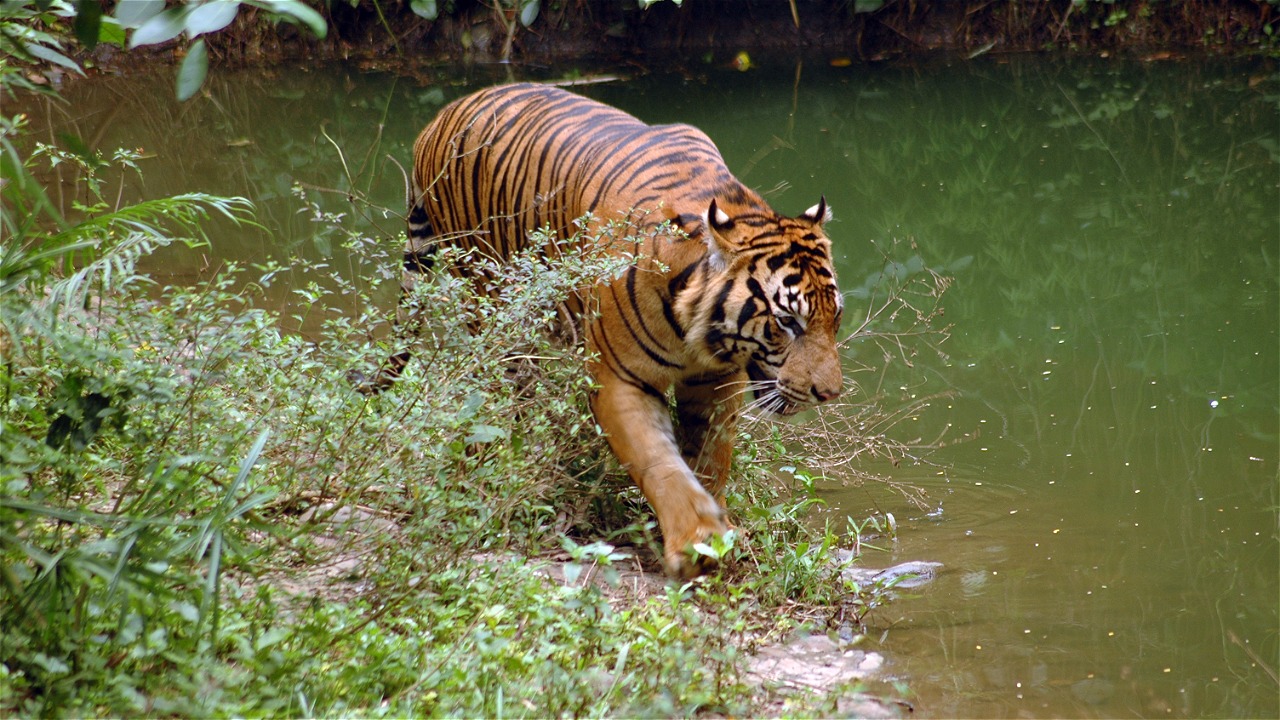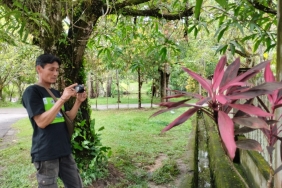HACKING THE FOREST FOR PAPER TIGERS
Indonesia's forests are home to the Sumatran Tiger (Phantera tigris sondaica). The condition of the Sumatran Tiger population is increasingly endangered, given the reduction in the area of Sumatran forests. The remaining Sumatran forest calculated from 1985 to 2014 is 10.8 million hectares or only 25% of the total area of the entire island of Sumatra, if calculated, the rate of Sumatran forest loss reaches 500 thousand hectares per year, or about one hectare per minute.
According to the drastic loss of Sumatran forest area, comparable to the loss of the Sumatran Tiger population, according to the Sumatran Tiger Conservation Strategy 2007-2017, the Sumatran tiger population is only 400 individuals, this figure was quoted from the IUCN Cat specialist group which released it in 2002. Because of its rarity, this Sumatran big cat is included in the IUCN Redlist (IUCN Redlist), the Critical or Critically Endanger (CR) category.
How can you conclude a figure of 400 individuals? This figure is the result of a joint agreement of tiger experts around the world, how experts, conservation organizations working for the preservation of Sumatran tigers gather to present the results of their census in various regions where they work. The agreement at that time - in 1992 was that there were only an estimated 400 individuals left in five national parks and two wildlife reserves, while about 100 others were outside the seven conservation areas (PHPA 1994).
Well, that number is used until now as the official population figure of Sumatran Tigers. Indonesia has not recalculated its final population, so how can it declare the success or failure of the activities set out in the strategy? The number could be reduced given the many cases of poaching and conflict between tigers and humans.
How to Calculate Tiger Population?
So how does a Sumatran Tiger census work? Is it searched one by one and then interviewed? Of course not, just hearing its roar makes you shudder and make you weak. The trick is to use the camera trap method, or camera traps, these cameras are installed in locations that are thought to be the place or home of this tiger. But before we install the camera trap, we need to make a grid on the map of the location that is estimated to be the habitat, then agree how many boxes of the grid will be installed with the camera.
The installation method also needs its own knowledge, it must be matched with the average height of the tiger, so that it can capture photos of its entire body, and the camera cannot be just one, it needs several cameras that capture from left-right, front and back. This is useful for the next activity, namely identifying, because we cannot count tigers that are photographed several times, they will be counted twice, so that the population figures obtained are higher.
If camera traps have been installed, then how do you identify one Tiger from another? The way is to carefully examine the results of photos with camera traps, because the stripes of one Tiger are different from other Tigers or like fingerprints on humans.
Then what should be done to save the Sumatran tiger?
Then the question continues, what can be done to save the Sumatran Tiger? In terms of habitat, there must be extensive management, which means increasing the guarding and supervision of the area. Also crack down with the severest punishment for Sumatran Tiger poachers to increase the deterrent effect.
Well, what about people in the city, what should we do to save one of Indonesia's pride? the answer is easy, one of them saves paper. Why can saving paper save tigers? Because paper is made from trees, the more paper consumption, the more trees are needed. The more paper consumption, the more trees that must be planted, instead of being good but the opposite, the trees planted are acacia trees, meaning that trees in the forest must be cut down to plant this acacia.
The average paper consumption in the world is 54.7 kilograms per person, the figure for Asia is 41 kilograms per person excluding Japan. Meanwhile, one ton of paper powder, generated from 24 trees, 32 million BTU's of energy, produces 22,219 gallons of liquid waste and half a kilogram of solid waste (1,922 pounds). So not only are forests lost, but also energy is wasted and waste (liquid and solid)
Well, so we can save the Sumatran Tiger in an easy way, just save paper. If we don't do it, don't be surprised, in the next few years we can only find paper tigers!
(Diah R. Sulistiowati - The writer is the Communications and Advocacy Coordinator of WWF Indonesia)





